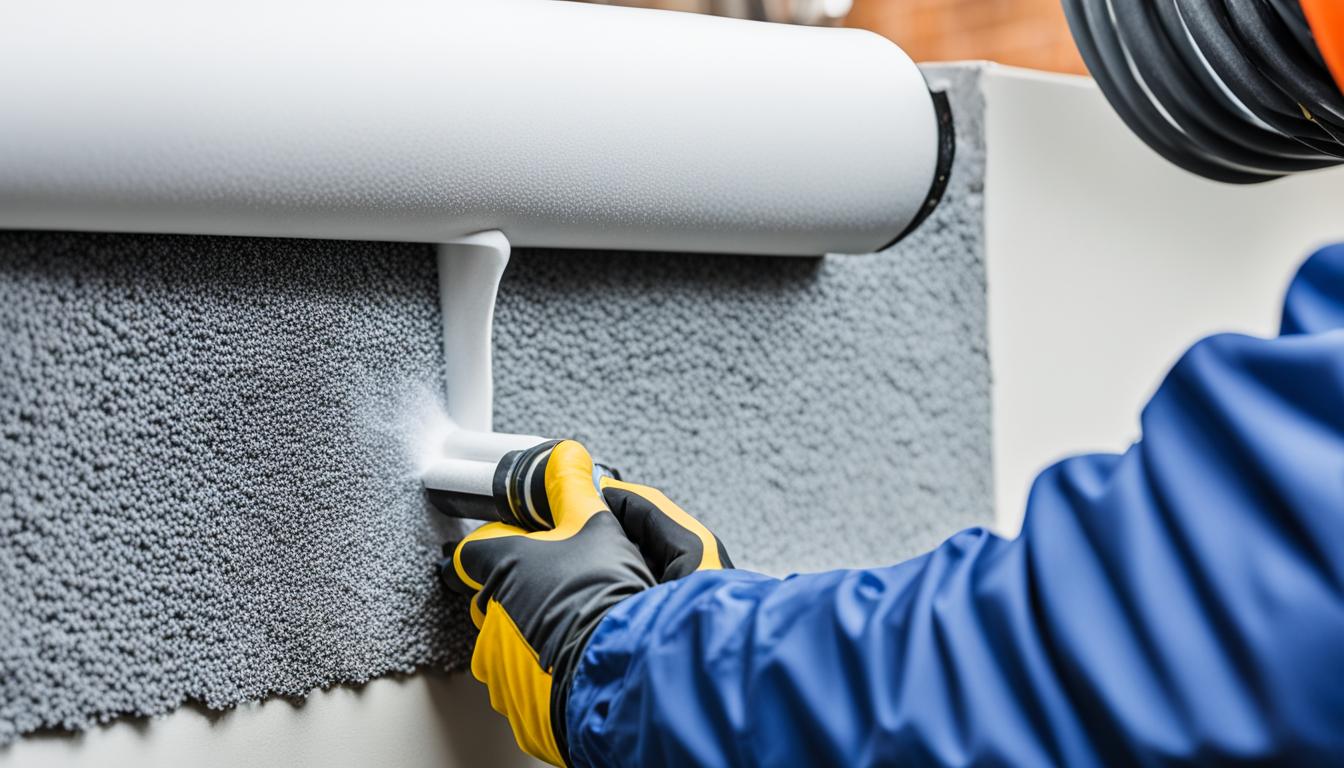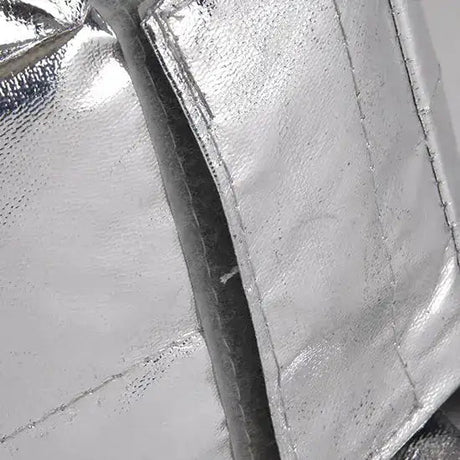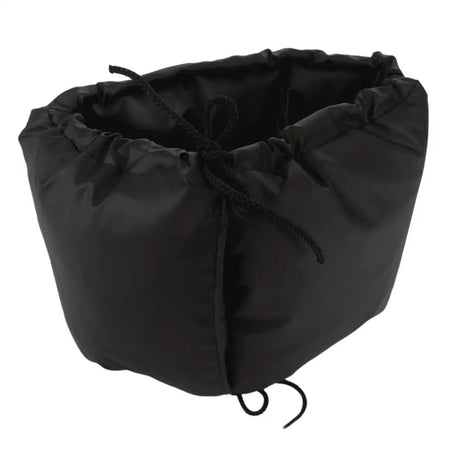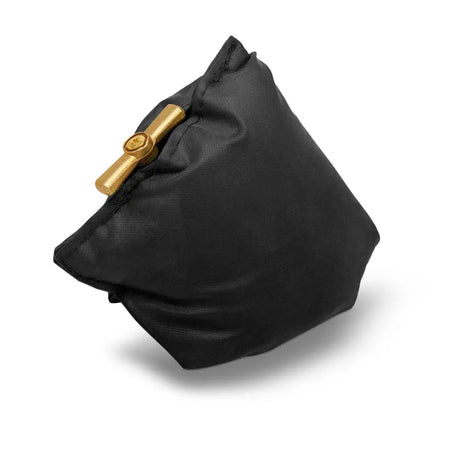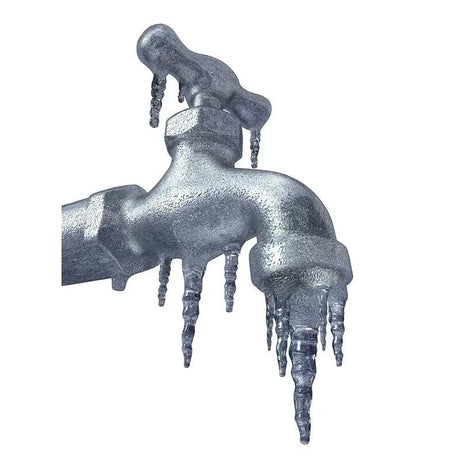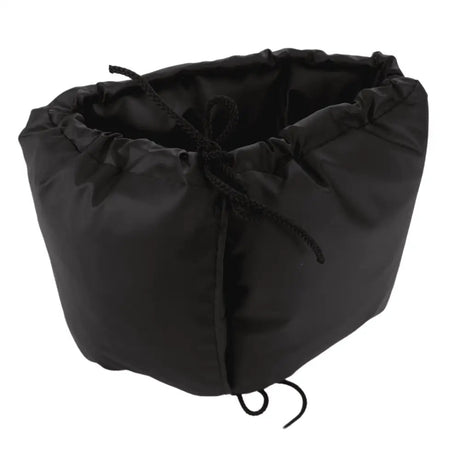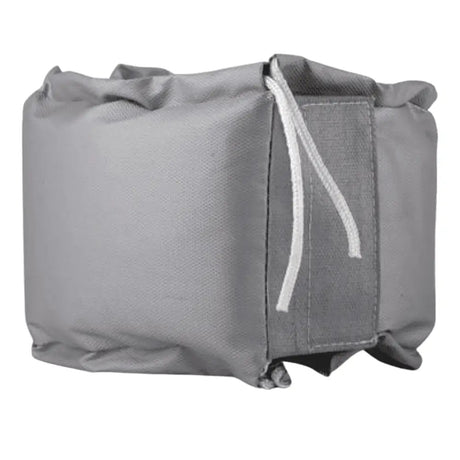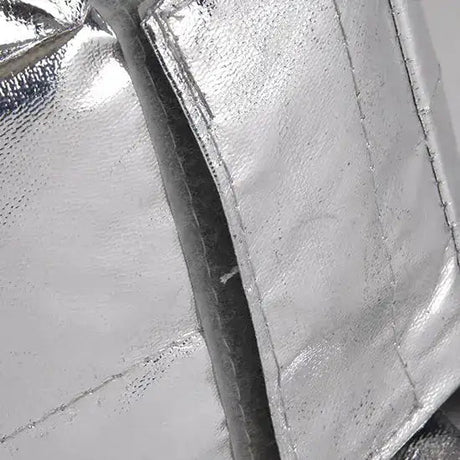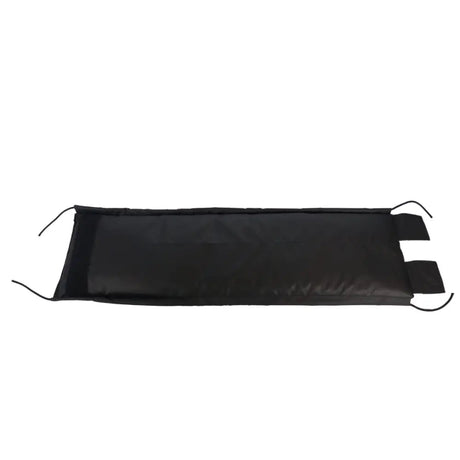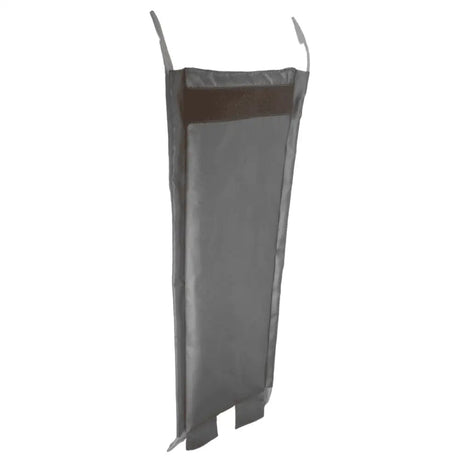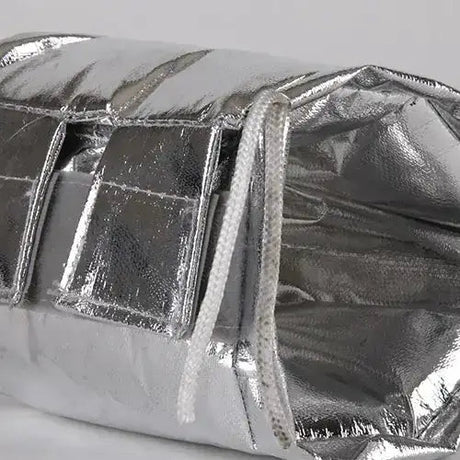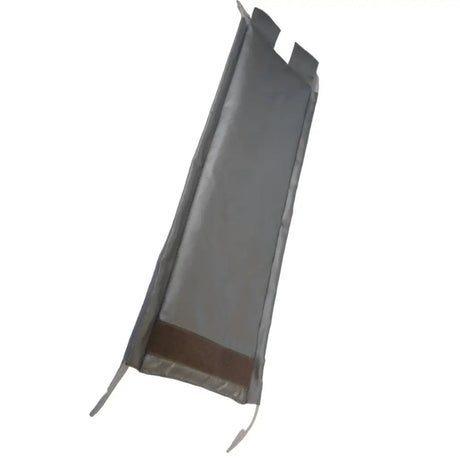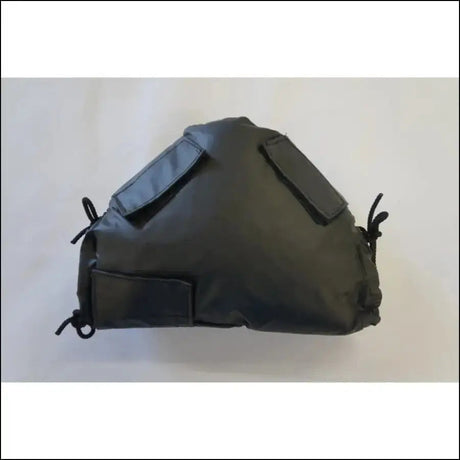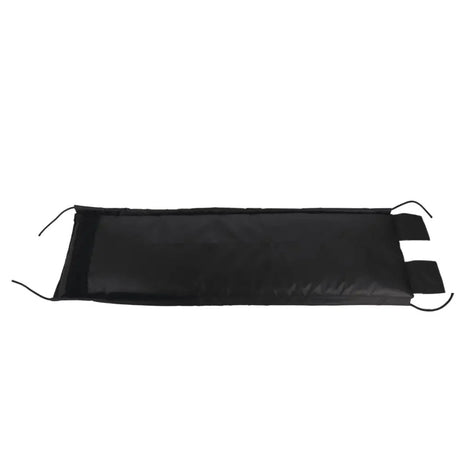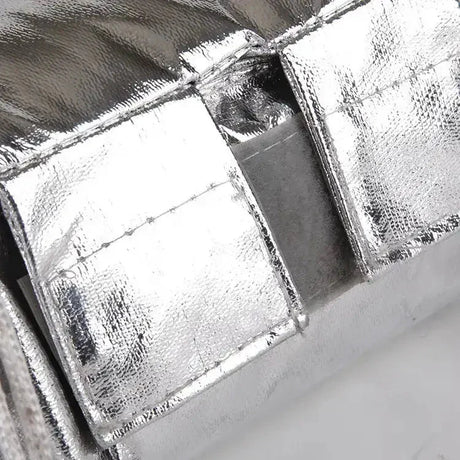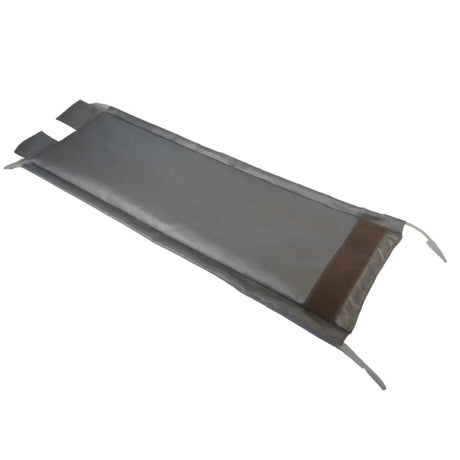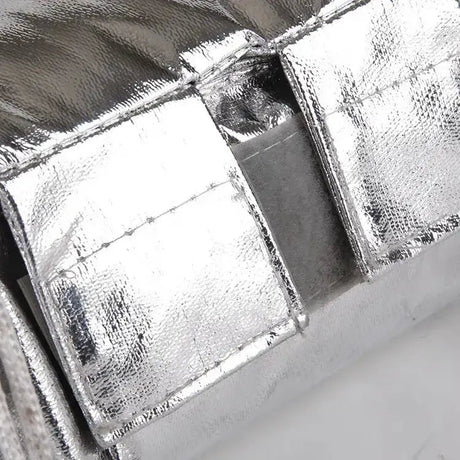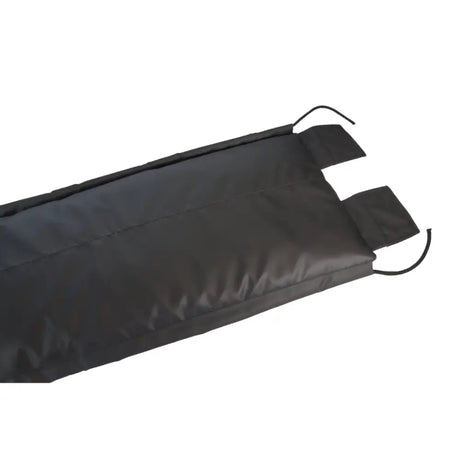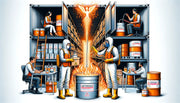The key to better HVAC performance might not be in the mechanics but in the insulation. HVAC elastomeric foam insulation stands out in an industry set to grow past USD 246 billion by 20351. Its outstanding features can majorly boost enhancing HVAC performance, changing how we view heating and cooling systems. Elastomeric foam insulation starts a new chapter in efficiency. This is reflected in predictions of its market hitting USD 7396 million by 20331.
Key Takeaways
- Understanding the pivotal role of elastomeric foam insulation benefits in HVAC efficiency.
- Insights into the insulation market growth, with a specific focus on the HVAC industry's projected expansion1.
- Exploring the substantial market increase predictions for elastomeric foam insulation1.
- Recognising the economical and environmental implications of adopting elastomeric foam insulation in heating and cooling systems.
- Identifying industry leaders in elastomeric foam manufacturing and the expected regional market trends1.
Understanding Elastomeric Foam Insulation and Its Uses
Over fifty years ago, elastomeric foam insulation made a big splash in the industrial world. It offers better materials for thermal insulation in many areas2. With a mix of polyvinyl chloride (PVC) and nitrile butadiene rubber (NBR), it's key for stopping condensation and saving energy2. It's not just popular, but the elastomeric foam market is set to grow, with a 6.90% increase expected by 20293. This boost shows its broad use, reaching beyond HVAC to include automotive, electrical, and construction industries3.
The Composition of Elastomeric Foam: NBR, EPDM, and CR
Elastomeric foam insulation excels because of materials like NBR, EPDM, and CR. They offer great flexibility and keep heat transfer low. This makes them as good, or even better, than other insulation options2. Plus, they're really good at controlling moisture, which helps save energy and keep insulation working well2.
Applications in Diverse Industries: HVAC and Beyond
Elastomeric foam insulation is incredibly versatile. It's used in refrigeration, air conditioning, and chilled water systems because it cuts down on energy loss effectively2. More people want energy-saving options, and strict insulation rules in industries have made it more popular. It's especially big in the Asia-Pacific region, where growing industries look for advanced, green materials3.
Manufacturing Process: From Mixing to Packaging
The creation of elastomeric foam is a marriage of science and technology. It starts with mixing polymers and then shaping them through extrusion. Next, a foaming process creates the insulation's unique closed-cell structure. NBR-based insulation is durable and handles temperature changes well. It's safe for use even underground, with no dust or toxins2. Thermoplastic polyolefin insulation, while similar, behaves differently under extreme temperatures and in fire2. These products are packed up and sent out to meet the needs of various industries.
The market for elastomeric foam is expected to grow greatly. Its importance in construction and transport shows its role in addressing environmental issues and boosting energy efficiency in many areas3.
| Elastomeric Composition | Low Temperature Flexibility | Water Vapor Transmission | Thermal Conductivity (k) at 75°F |
|---|---|---|---|
| NBR/PVC Blend | Excellent | ≤ 0.1 perm in. | ≤ 0.30 BTU-in./hr.-sq. ft. F |
| Polyolefin | Excellent | ≤ 0.1 perm in. | ≤ 0.30 BTU-in./hr.-sq. ft. F |
Evaluating the Benefits of Elastomeric Foam Insulation for HVAC Systems
The journey to make HVAC systems better shines a light on elastomeric foam insulation's benefits. It's a key to boosting energy efficiency in commercial areas4. Studies show its big role in saving energy5. The commercial sector uses it the most, keen on cutting energy use4. The Asia Pacific leads in its use, showing the world its benefits4.
Superior Energy Efficiency and Lower Energy Costs
Elastomeric foam is central to energy efficiency. It cuts energy bills by stopping heat transfer. This keeps indoors comfy with less energy4. More people are noticing its value, encouraged by government rewards4.
Corrosion Under Insulation Prevention and Noise Reduction
Elastomeric foam also fights corrosion under insulation. It blocks moisture, protecting HVAC systems5. Plus, it's great at noise reduction, making buildings quieter5.
Importance of HVAC Piping Insulation for System Performance
Piping insulation is crucial, growing fast in the market4. It stops heat loss, protects pipes, and keeps them working well. Innovation keeps making it better4.
In summary, elastomeric foam insulation excels in saving energy, preventing corrosion, and reducing noise. It fits well with green government policies. It's perfect for making HVAC systems better and eco-friendly4.
How HVAC Elastomeric Foam Insulation Enhances System Reliability
Energy-efficiency and sustainability are becoming more important, making HVAC elastomeric foam insulation vital for system reliability. The technical insulation market is expected to grow from USD 10.9 Bn in 2024 to USD 16.17 Bn by 2031. This growth shows a move towards more reliable insulation solutions6. In heating & plumbing, which has the biggest market share, insulation's key role is apparent6. Elastomeric foam reduces energy loss and prevents condensation, maintaining HVAC system performance and extending its life through better thermal management.
https://www.youtube.com/watch?v=vAOEMSJ3RLY
In North America, the technical insulation market is strong, making up 44.4% of the global share6. Industries like oil & gas, and energy & power are leading in using hvac elastomeric foam insulation to improve system reliability6. Mineral wool and calcium silicate are important for high-temperature uses, and hot insulation holds 50.6% of the market share6. This shows how vital insulation is in protecting systems from extreme temperature changes.
Insulation's advantages are measured not just by better performance but also by reducing system failures. Research shows more than a 10% variance in thermal conductivity in some cases, highlighting the need for accurate and reliable insulation7. Elastomeric foam maintains consistent performance, meeting manufacturers' promises that thermal properties like conductivity stay within 10% of the stated value, enhancing system reliability7.
With the biggest demand for technical insulation coming from industrial settings, the need for reliable elastomeric foam insulation is clear6. It not only makes systems last longer, but its ability to work with various materials for piping insulation shows its widespread use and trust in the industry7.
In conclusion, hvac elastomeric foam insulation is fundamental in both industrial and residential settings. It plays a key role in ensuring system reliability and supporting sustainable energy saving efforts.
Installation Techniques for Elastomeric Foam Insulation
Installing elastomeric foam insulation is key to making HVAC systems work better. It requires careful work and following industry rules for the best warmth keeping and lastingness. This type of insulation has come a long way over more than fifty years, making it better over time. It now offers advanced options for today's HVAC needs, thanks to the early use of flexible closed-cell materials. These advancements help buildings save energy and keep comfortable2.
Choosing the Right Insulation Thickness
One important choice in installing this insulation is how thick it should be. This depends on the HVAC system's working temperature and the surrounding environment. Balancing how well the insulation works and how much it costs is key. The special structure of elastomeric products, with thermal conductivities generally at 0.30 BTU-in./hr.-sq. ft. F or less at 75ºF, guides these decisions2.
Adhering to Industry Standards
For a top-quality installation, following industry standards is crucial. These include keeping water vapor transmission low (usually 0.1 perm in. or less) to stop problems like corrosion and mould. Considering the insulation's operating temperature range is also vital. Elastomeric insulation can be used in a wide range of temperatures, from -70ºF to 220ºF. This shows its ability to work well in different weather conditions2.
Guidelines for Proper Application
Applying elastomeric foam insulation correctly is very important. Installers need to know how to handle both self-adhesive and non-adhesive types, in tube or sheet form. This ensures a good fit on HVAC parts. It's also crucial to stop heat transfer, prevent condensation, and reduce noise for a long-lasting system and comfortable space28.
It doesn't matter if you're using FOAM-B without self-adhesive or FOAM-G with easy-to-stick features. Knowing how to install them, considering their special qualities like UV resistance, is very important. The design of these insulation types makes installation easy, especially those with self-seal or adhesive features. This helps achieve excellent control over condensation and keeps warmth in effectively8.
In short, installing elastomeric foam insulation takes a deep understanding of the material and industry standards. It also requires careful application. Done properly, this insulation provides strong thermal protection, acts against vapor, and fits the needs of various HVAC systems. By choosing the right thickness and following good installation methods, HVAC experts can create a system that saves energy and lasts through changing weather.
| Material Type | Typical Use Temperature Range | Water Vapor Transmission (WVT) | Thermal Conductivity (k) | Structure |
|---|---|---|---|---|
| Elastomeric Insulation | -70ºF to 220ºF | 0.1 perm in. or less | 0.30 BTU-in./hr.-sq. ft. F or less | Crosslinked (Thermoset) |
| Polyolefin Insulation | -150°F to 180°F | Less than 0.1 perm in. | Less than 0.30 BTU – in./hr. sq. ft. F | Thermoplastic |
Insulation Standards and British Standards Institute (BSI) Specifications
For HVAC systems to work at their best, strict insulation standards are needed. The British Standards Institute (BSI) is key in setting these standards. These standards focus on safety, efficiency, and the environment. Knowing and applying BSI standards ensures optimal performance of insulation. This is crucial for the upkeep of any building.
Understanding BSI Requirements for HVAC Insulation
The BSI provides detailed specifications for HVAC insulation. It highlights the need for Good Industry Practice in installation and regular quality checks. Moreover, it demands that materials meet both European and British Standards9. This makes sure that HVAC systems are efficient, safe, and long-lasting. The standard ISO 9229:2007, for instance, helps everyone understand thermal insulation terms10.
Navigating Regulations for Optimal Insulation Performance
Choosing the right materials is crucial for good insulation. These materials must stick to BSI guidelines. Changes to better environmental performance are recommended9. Also, all materials should follow the maker's advice9. Products like elastomeric foam and polyethylene foam are held to specific European standards. These ensure they work well when installed10.
| Product Type | European Standard | BSI Endorsement |
|---|---|---|
| Elastomeric Foam (FEF) | EN 14304:2015 | Yes |
| Wood Wool (WW) | EN 13168:2012+A1:2015 | Yes |
| Expanded Polystyrene (EPS) | EN 14309:2015 | Yes |
| Polyethylene Foam (PEF) | EN 16069:2012+A1:2015 | Yes |
BSI also cares about maintenance and the environmental impact of materials. Information about the environmental effects of materials should be easy to get9. BSI standards aim for materials that last and are cost-effective to maintain9. Understanding and following BSI rules is essential. It's not just about following rules—it ensures a building’s HVAC system works well.
Comparing Elastomeric Foam Insulation with Alternative Types
Elastomeric foam insulation is gaining attention for its many benefits. It shows how it's better than older insulation types. Looking at different insulation options explains why elastomeric foam is a top choice.
The Drawbacks of Traditional Insulation Materials
Traditional insulation like mineral wool and polystyrene has its downsides. Studies reveal these materials often don't meet the expected thermal performance. This discrepancy can be over 10%, against the ISO 13787 standard in Europe7. This issue raises concerns about the reliability of such insulations.

Advantages of Elastomeric Foam Over Other Insulations
Elastomeric foam insulation stands out for its benefits. Research shows it keeps its properties stable, affecting thermal performance well7. It meets strict standards like ISO 8497, ensuring its effectiveness at various temperatures7. This makes elastomeric foam a trusted and reliable choice.
Elastomeric foam insulation directly addresses the issues with older insulations. It meets high industry standards and performance needs. It is especially useful in improving HVAC systems.
The benefits of elastomeric foam are clear. They include better efficacy, adherence to standards, and reliability. It's no wonder why it's the go-to insulation for modern construction.
Cost-Benefit Analysis of Upgrading to Elastomeric Foam Insulation
Looking into the costs and benefits of picking elastomeric foam insulation means weighing up long-term savings against immediate costs. This insulation is becoming more popular, especially in the HVAC sector, because of global shifts towards greener choices. Its fire resistance and easy fitting lead to reduced maintenance and energy costs over time1112.
There is a growing interest in better thermal insulation, with more people choosing elastomeric foam to cut down on energy bills11. In North America, efforts to meet EPA rules mean high-quality products that need less repair, helping to save money in the long run11. Asia-Pacific shows strong growth too, choosing insulation that works well and lasts, bringing financial benefits1113.
When thinking about elastomeric foam insulation, you must consider both its upsides and downsides. The upfront costs might worry smaller businesses. Yet, new technologies like aerogels are changing this by making insulation more efficient and affordable13. This progress, with the market's annual growth of 6.90%, shows a promising future for cost-effective materials12.
Here is a comparative analysis highlighting the potential cost savings of using elastomeric foam insulation in HVAC systems:
| Aspect | Elastomeric Foam Insulation | Traditional Insulation |
|---|---|---|
| Initial Investment | Higher but offset by long-term savings | Lower but may incur higher costs over time |
| Energy Efficiency | Superior, leads to reduced utility bills | Varies, often less efficient |
| Maintenance Costs | Lower due to durability and resistance to environmental factors | Higher, more prone to wear and damage |
| Environmental Impact | Strict adherence to EPA guidelines lessens carbon footprint | Potential for higher environmental impact |
| Installation Ease | Simpler, with versatile applications in various industries | May require more complex installation processes |
Upgrading to elastomeric foam insulation meets the modern need for eco-friendly and efficient buildings. It also fits in with a larger goal of saving costs and energy in the long term.
Elastomeric Foam Insulation's Contribution to Sustainability and Environment
As we increasingly focus on protecting our environment, elastomeric foam insulation has become key in green building. It's known for making buildings warm more efficiently and being kind to the planet. This material's eco-friendly features and its role in saving energy and promoting sustainability are vital.
The Eco-Friendly Aspects of Elastomeric Foam
Elastomeric foam insulation is great for the environment because it releases low levels of harmful substances. It's special because it doesn't let out tiny particles or fibres, keeping the air inside buildings clean14. Plus, it fights off mould with its antimicrobial protection, making indoors healthier14. With a GREENGUARD Gold label, it's proven to be safe for places like schools and hospitals14. These places are choosing elastomeric foam to ensure good air quality and overall health14.
The Role of Insulation in Energy Conservation
Keeping energy use low is crucial, and elastomeric foam insulation plays a big part in that. It's excellent at stopping heat from escaping through pipes. This insulation is tested to work well over a range of temperatures, cutting down on how much energy we use7. It sticks to strict European standards for thermal performance, so we can trust it to save energy7. The market for this foam is growing, showing its popularity for being green and efficient15.
The data shows a strong move towards sustainable insulation options. Here's a look at what's expected for the market:
| Insulation Type | Market Value 2019 (USD billion) | Projected Market Value 2024 (USD billion) | CAGR (%) |
|---|---|---|---|
| Elastomeric Foam | 2.6 | 3.6 | 6.715 |
| Aerospace Foams | 4.4 | 6.5 | 8.215 |
| Foam Glass | 1.503 (kilotons) | 1.964 (kilotons) | 5.515 |
| Flexible Elastomeric Foam | 2.2 | 2.7 | 4.7215 |
| Tank Insulation | 5.2 | 6.5 | 4.5015 |
The table shows a clear growth in the market for different types of insulation. It reflects a growing preference for materials that save energy and are good for the planet. This shift isn't just about market trends; it shows how people are becoming more aware of their environmental impact.
Maintaining HVAC System Health with Regular Insulation Checks
Regular insulation inspections are key to keeping your HVAC system healthy. It's about more than just fixing issues. It means carefully looking ahead to prevent problems and keep your system in top shape.
Inspection and Maintenance for Long-Term Performance
For HVAC systems to last, it's crucial to regularly check their insulation. Take fibrous glass HVAC duct systems, for instance. They work within a wide range of pressures and temperatures. But they must be checked yearly16. Materials like fibreglass need yearly reviews for issues like moisture and tearing. Meanwhile, mineral wool should be looked at every 2 years17. These checks help identify issues early on and keep the system safe and efficient16.
Preventive Measures to Avoid System Deterioration
Taking steps to prevent problems helps keep your system from getting worse over time. Keeping insulation in good condition, for example, can cut your energy costs. Tools like smart pipe sensors and infrared imaging alert staff to temperature issues early on17. This smart planning can save you money by avoiding big repairs or damage claims17.

| Insulation Material | Inspection Frequency | Key Checks |
|---|---|---|
| Fibrous Glass | Annually17 | Thickness, Moisture Absorption, Air Velocity Compliance16 |
| Mineral Wool | Every 2 Years17 | Compression, Gaps, Moisture Damage |
| Elastomeric Foam | Every 3-5 Years17 | Cracks, Deformation, Moisture Ingress |
| Polyethylene Foam | Every 2-3 Years17 | Gaps, Punctures, Water Damage |
| Calcium Silicate | Every 5 Years17 | Protective Jacket Integrity, Sealed Joints |
The Technological Advancements in Elastomeric Foam Insulation Manufacturing
The production of elastomeric foam insulation is changing rapidly, thanks to constant technological advancements. Kaimann, leading the way in innovation in insulation production, showcases its Kaiflex brand. This brand proves its commitment by being able to save up to 580 times the CO2 emitted during its production process18. This achievement highlights the link between innovation and caring for the environment.
Kaimann's dedication to sustainability is shown by its ISO 50001 and ISO 14001 certifications, gained in 2014 and 2013 respectively18. By meeting high standards like the German Energy Saving Regulation and the Renewable Energy Act, Kaimann adopts a quality-focused, environmentally friendly approach across its operations18.
The demand for elastomeric foam insulation materials is expected to rise, reaching around USD XX.X billion by 203119. This increase is driven by expansion in regions like North America, Europe, and the Asia Pacific, with China's electric vehicle market booming19. The Middle East and Africa are also showing interest in sustainable energy and e-mobility solutions19.
A detailed study on thermal conductivity has shown the urgent need for insulation materials to perform as promised or better7. The European ISO 8497 standard helps compare materials like mineral wool and flexible elastomeric foams. These are essential for modern insulation production7. This research highlights the importance of quality assurance and the search for better insulation solutions.
More markets are adopting elastomeric foam insulation because of its energy efficiency. Kaimann is actively supporting green initiatives like those by the EIIF and Interseroh Partner. This movement reflects a wider industry shift toward green innovation and strict environmental standards18. Because of this ethos, the elastomeric foam insulation manufacturing sector is progressing towards a more sustainable future.
Finding the Best Elastomeric Foam Insulation Brands and Products
When seeking elastomeric foam insulation brands, HVAC experts need to weigh several important points. This helps them pick the best insulation products. AF/Armaflex Class O and Kaiflex ST stand out with their efficient thermal performance. Their formulas, 0.033 + 7.1316 × 10-5 × θ + 1.2533 × 10-6 × θ2, support thermal efficiency in a wide temperature range20. They both have k-values of ≤0.034 W/(m·K), which means they are great at stopping heat flow20.
Choosing the right brand also means looking at how the product performs under different conditions. For both brands, the μ-value is ≥10,000 for wall thicknesses under 32mm, showing how well they resist water vapor. For thicker walls, Kaiflex ST keeps this level but AF/Armaflex Class O's μ-value decreases, yet it's still high at ≥7,00020. It's also crucial to know the temperature range they work in. AF/Armaflex Class O works from -50°C to +110°C, proving its use in extreme conditions. On the other hand, Kaiflex ST is effective from -50°C to +85°C. For temperatures above 85°C up to 150°C, Kaiflex HT is the better option20.
Table: Fire Performance and Environmental Attributes of Leading Insulation Brands
| Brand | Fire Performance (Euroclass) | ODP | GWP | VOCs |
|---|---|---|---|---|
| AF/Armaflex Class O | BL-s1,d0 | Zero | Zero | Negligible |
| Kaiflex ST | B-s3,d0 | Zero | Zero | Negligible |
While choosing an insulation brand, don't overlook the environmental impact. Both AF/Armaflex Class O and Kaiflex ST have a score of zero in ozone depletion and global warming potential. This makes them environmentally safe choices20. Also, their fire safety ratings meet strict European and British standards, giving you confidence in their safety20.
The sound absorption quality is also key for maintaining a quiet space. AF/Armaflex Class O's sound absorption is rated αw 1. Selecting a brand that provides this while also reducing noise from buildings is crucial. It ensures structures are sound and comfortable for people inside20.
If you're an HVAC professional searching for elastomeric foam insulation brands, detailed assessment is vital. It's important to compare performance, sustainability, and global standards. This way, you ensure you choose the best insulation products for the modern HVAC demands.
Conclusion
Looking back, elastomeric foam insulation plays a crucial role in HVAC systems due to its strong features and efficiency. These systems handle air speeds up to 5,000 fpm (25.4 m/sec). They also work well in temperatures from 40˚F to 250˚F. This helps keep indoor climates perfect16. Plus, they meet strict safety standards, making them reliable for fire safety16.
The push for green solutions highlights the importance of elastomeric foam insulation. Buildings contribute 39% of CO2 emissions from energy use21. It's critical for the HVAC field to adopt better insulation to cut emissions significantly. By using renewable energy, fibrous glass duct systems could greatly reduce fossil fuel use. This could cut greenhouse gas emissions by half1621.
Elastomeric foam insulation is more than an add-on; it's key for better HVAC systems, sustainability, and saving money over time. Understanding its make-up allows experts to pick the best insulation methods, following top standards. In today's world, saving energy is vital. Insulation leads the way, offering comfort without the environmental cost. It's steering us towards a greener industry.
FAQ
What is elastomeric foam insulation?
Elastomeric foam insulation is made from synthetic rubber. It helps HVAC systems work better by saving energy, stopping corrosion, lowering noise, and keeping temperature consistent.
What are the benefits of using elastomeric foam insulation for HVAC systems?
This insulation boosts energy efficiency and stops corrosion. It also lowers noise and keeps HVAC systems running smoothly.
How does elastomeric foam insulation enhance system reliability?
By insulating and preventing condensation, elastomeric foam insulation cuts down energy loss. This leads to steady HVAC performance and longer equipment life.
What are the key considerations for installing elastomeric foam insulation?
Picking the correct insulation thickness is crucial. It's also important to stick to industry norms and follow proper guidelines for installing.
What are the British Standards Institute (BSI) specifications for HVAC insulation?
The BSI provides detailed specs and requirements for HVAC insulation. They ensure systems work well and meet industry standards.
How does elastomeric foam insulation compare to other types of insulation?
Elastomeric foam insulation outperforms traditional materials. It offers better energy saving, longevity, and resistance to environmental factors.
What is the cost-benefit analysis of upgrading to elastomeric foam insulation?
By moving to elastomeric foam insulation, you can save significantly. These savings come from lower energy bills, reduced upkeep costs, and better system reliability.
How does elastomeric foam insulation contribute to sustainability and the environment?
This insulation comes with low VOC emissions and cuts down on energy use. This promotes energy saving and lessens HVAC systems' carbon emissions.
How should I maintain HVAC system insulation?
Keeping HVAC insulation in good shape requires regular checks and upkeep. This prevents wear and tear over time.
What technological advancements have been made in elastomeric foam insulation manufacturing?
Innovations in making elastomeric foam insulation have led to better quality. These improvements come from new techniques and materials.
How do I choose the best elastomeric foam insulation brands and products?
When looking for the best insulation brands and products, consider their reputation and quality. Also, think about your specific HVAC needs.
Source Links
- https://www.researchnester.com/blog/chemicals/advanced-materials/elastomeric-foam-new-age-insulation-material
- https://insulation.org/io/articles/proper-use-and-application-of-flexible-closed-cell-insulation/
- https://www.databridgemarketresearch.com/news/global-elastomeric-foam-market
- https://www.marketsandmarkets.com/Market-Reports/hvac-insulation-market-75521260.html
- https://www.insulationinstitute.org/wp-content/uploads/2015/11/AH121.pdf
- https://www.coherentmarketinsights.com/industry-reports/technical-insulation-market
- https://www.ncbi.nlm.nih.gov/pmc/articles/PMC11012858/
- https://www.ventilation-alnor.co.uk/index/support/alnor-knowledge-base/ventilation/elastomeric-insulation.html
- https://www.bpha.org.uk/wp-content/uploads/2015/06/C2-Materials-Workmanship-Specification-M3NHF.pdf
- https://www.intertekinform.com/en-us/standards/bs-en-16783-2017-291864_saig_bsi_bsi_676749/
- https://www.globalmarketestimates.com/market-report/global-flexible-elastomeric-foam-market-3259
- https://www.databridgemarketresearch.com/reports/global-elastomeric-foam-market
- https://www.nextmsc.com/report/asia-pacific-cold-insulation-market
- https://www.armacell.us/sustainability/indoor-air-quality-iaq/
- https://www.marketsandmarkets.com/foam-and-insulation-market-research-257_1.html
- https://insulationinstitute.org/wp-content/uploads/2015/11/AH121.pdf
- https://www.buildingmaterials.co.uk/info-hub/insulation/guide-to-periodic-inspection-and-upkeep-pipe-insulation
- https://www.kaimann.com/triad-more-innovation
- https://www.linkedin.com/pulse/elastomeric-insulation-foam-materials-cbsgf
- https://insulation-more.co.uk/blogs/the-pipe-duct-lagging-expert/comparing-standard-nitrile-rubber-insulation-materials-armaflex-vs-kaiflex
- https://www.linkedin.com/pulse/effect-insulation-energy-saving-buildings-closed-cell-peyman-ezzati

